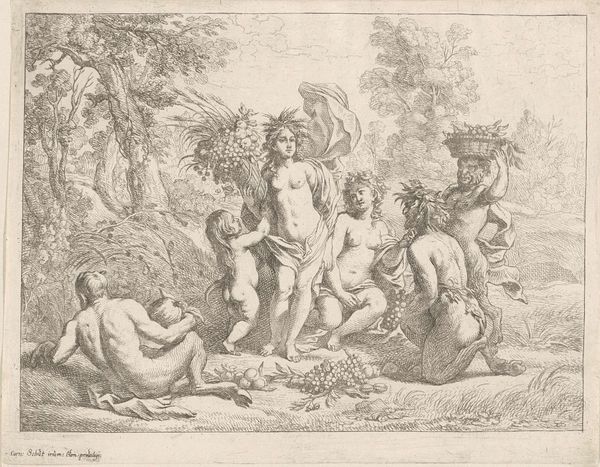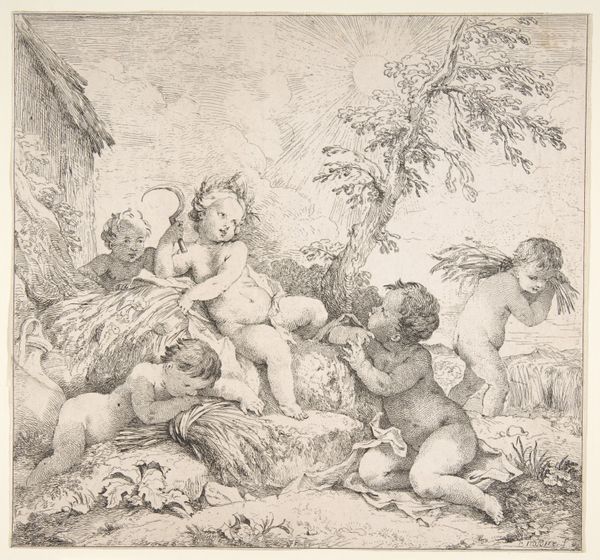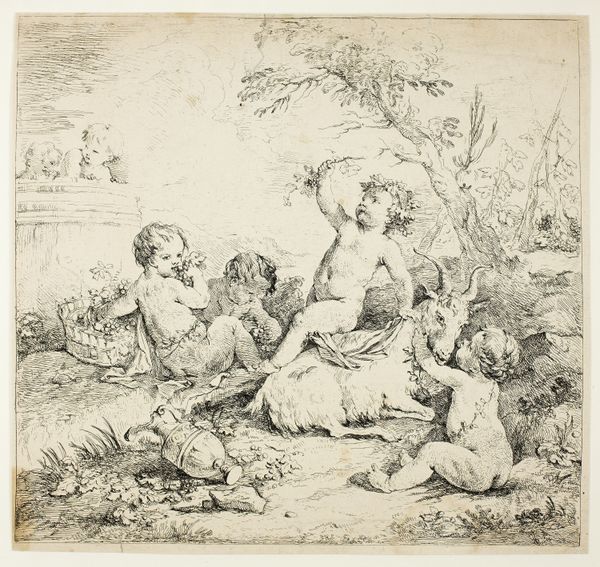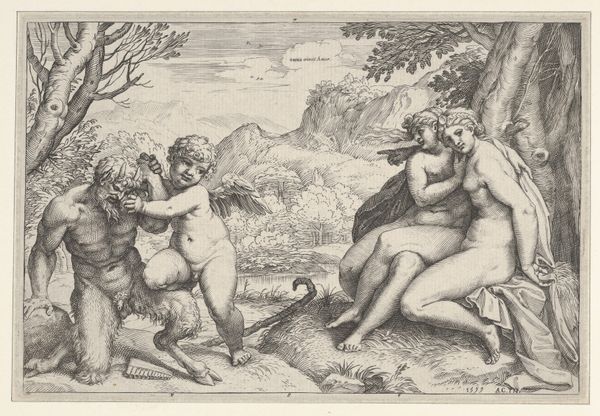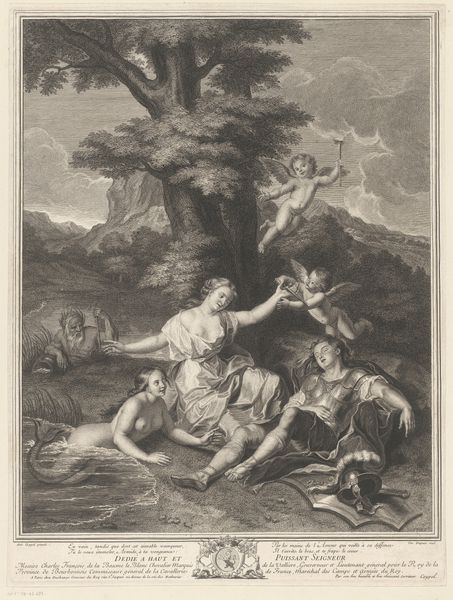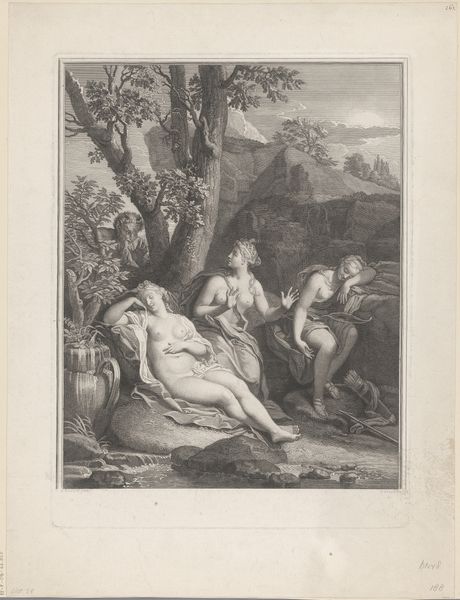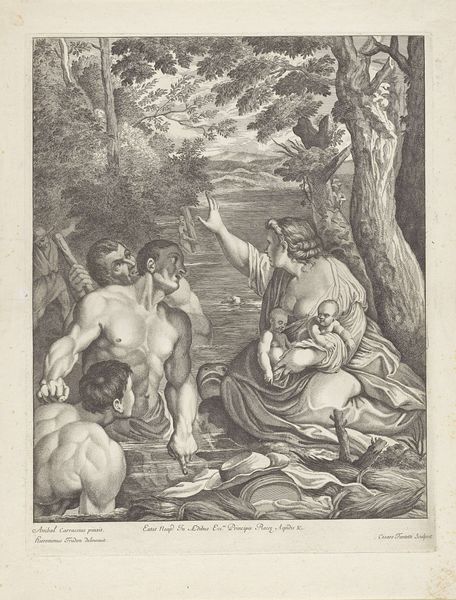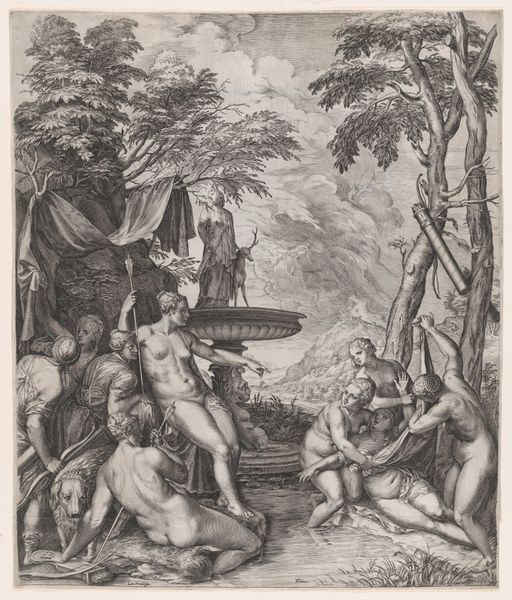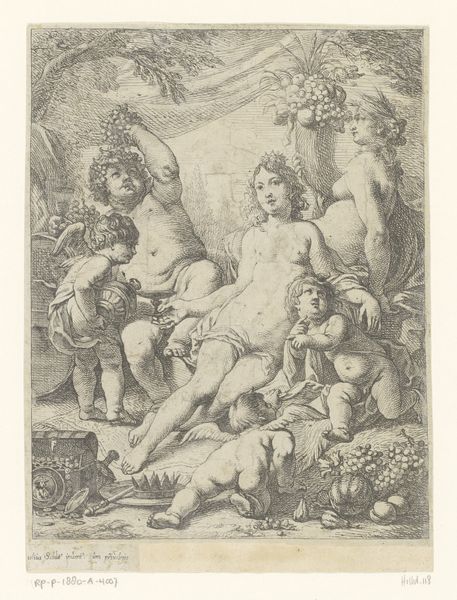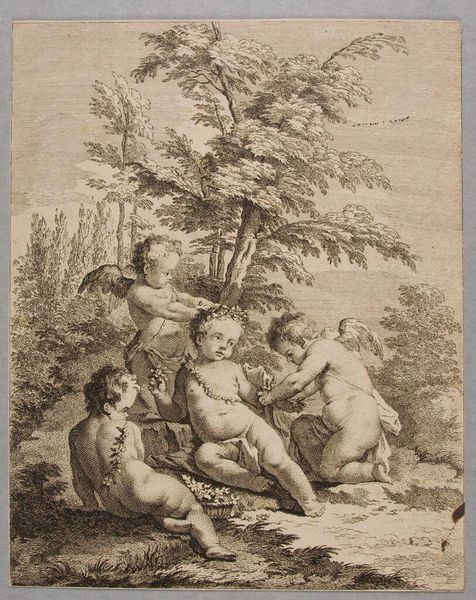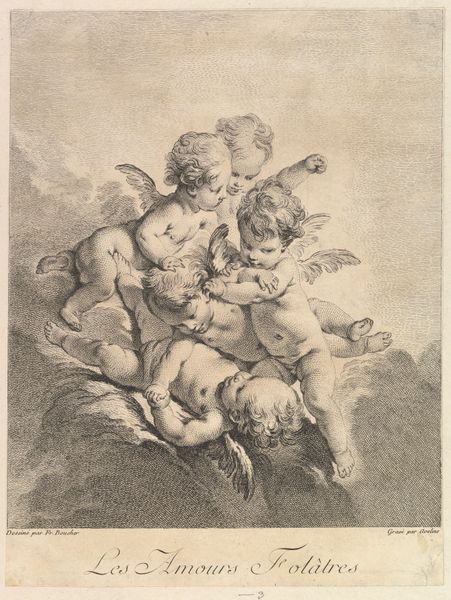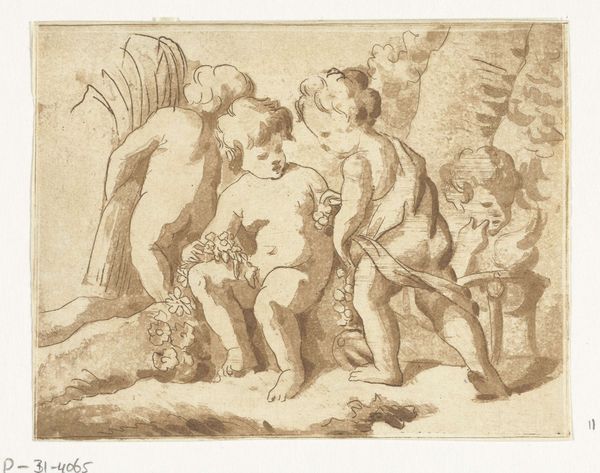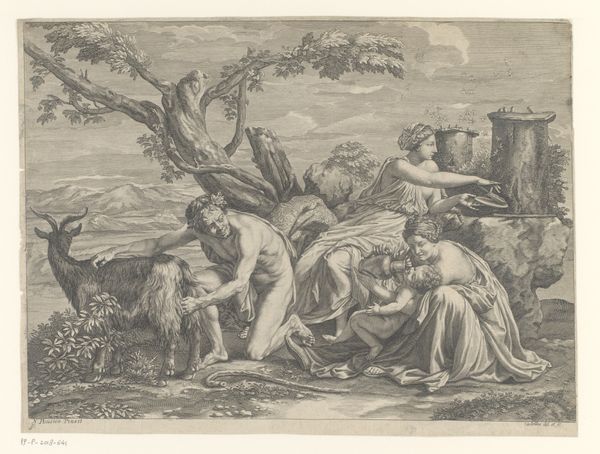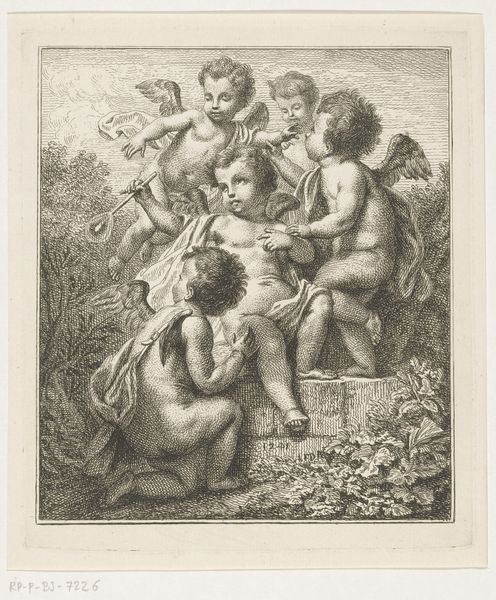
drawing, print, engraving
#
drawing
#
allegory
# print
#
landscape
#
figuration
#
genre-painting
#
engraving
#
erotic-art
#
rococo
Dimensions: Sheet (trimmed): 11 15/16 × 8 7/8 in. (30.4 × 22.6 cm)
Copyright: Public Domain
Editor: This is "Child Swimming," also known as "L'Amour Nageur," a mid-18th century engraving after François Boucher. It features a gaggle of cherubic figures playing in a stream. There's something almost saccharine about it, yet also a kind of vital energy. How do you interpret this work? Curator: The sweetness is deceptive. Observe the landscape: wild, untamed. Juxtapose that with the putti – traditionally symbols of profane love, derived from Cupid. What happens when we place these images together? The 'profane' gains context in the natural world, where Eros reigns untamed and instinctual. It's no longer a gentle sweetness but a naturalistic impulse. Editor: So, the setting isn't just decorative, it's essential to understanding the symbolism? Curator: Precisely. The water, for instance, symbolizes emotions, the subconscious. See how they wade, test, or spill? There is also the urn, which symbolizes abundance but can also represent death, resurrection, and even transformation, a constant symbolic cycle of the natural order and perhaps, love. Do you see that being repeated, or subverted in the central figures in the stream? Editor: Now that you mention the symbolic cycle of transformation, and in conjunction with eros, the erotic imagery reads very clearly as symbols of transformation and maturation in love. Curator: Exactly. They are miniature versions of ourselves navigating a landscape filled with the familiar struggles, fears, joys and hopes inherent to existence. Editor: I initially saw only a charming scene. Now, the complex layering of symbolism adds significant depth. Curator: And that is how art and iconography work, revealing cultural memory and imbuing continuity to symbols across the centuries. A Rococo game, perhaps, but one that still speaks volumes.
Comments
No comments
Be the first to comment and join the conversation on the ultimate creative platform.
